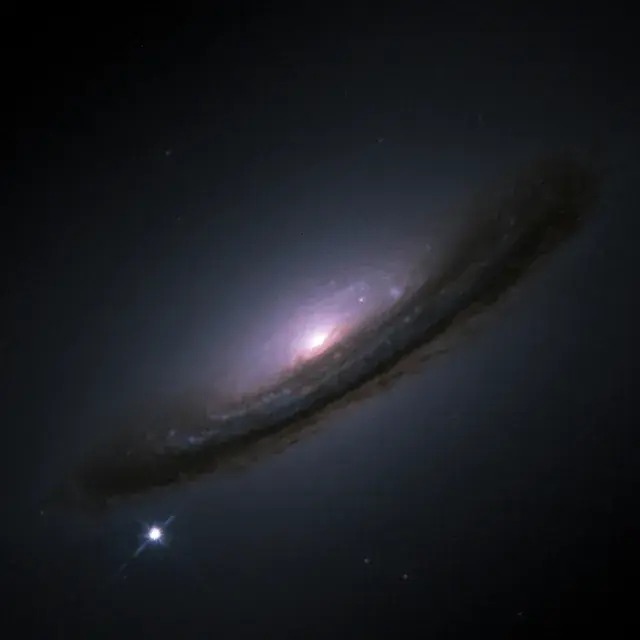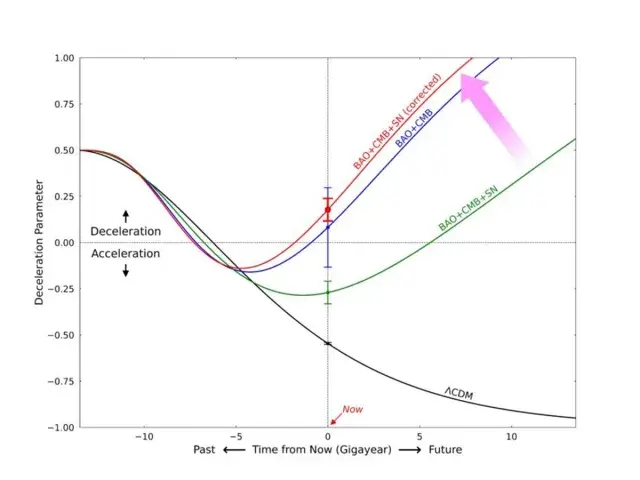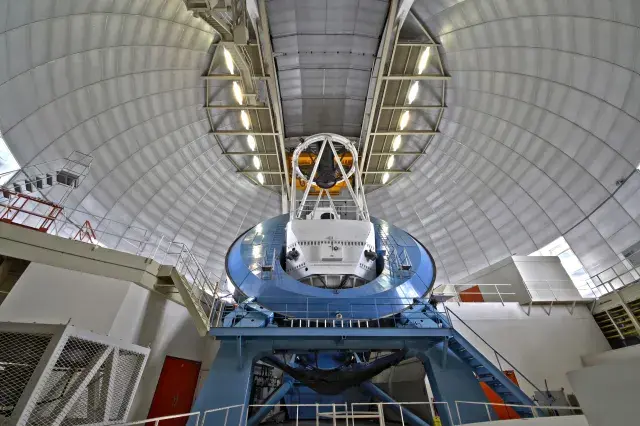
The expansion rate of the universe may be slowing down, rather than accelerating at an ever-growing rate, a potentially groundbreaking new study has hinted.
The suggestion challenges both the 2011 Nobel Prize-winning research that first proposed that distant galaxies were drifting apart with increasing speed—and the concept of “dark energy” proposed to explain what is driving this expansion.
The team from Yonsei University in South Korea has found evidence that the way we measure distances to distant galaxies—and calculate how the universe has expanded over time—may have been distorted by a previously unknown effect.
“Our study shows that the universe has already entered a phase of decelerated expansion at the present epoch and that dark energy evolves with time much more rapidly than previously thought,” said paper author and astrophysicist professor Young-Wook Lee in a statement.
“If these results are confirmed, it would mark a major paradigm shift in cosmology since the discovery of dark energy 27 years ago.”
In the aftermath of the Big Bang 13.8 billion years ago, the universe at first rapidly expanded, before gravity slowed this expansion down.
However, the notion that the universe had begun (some 4.8 billion years ago) expanding at an ever-increasing rate—with the distance between galaxies growing like the distance between dots marked on an inflating balloon—was first proposed in the late 90s.
The cause of this expansion has been attributed to “dark energy”—a mysterious, hidden influencer thought to make up a whopping 68 percent of the universe.
The hypothesis was based on the taking of distance measurements to faraway galaxies using type 1a supernovae, stellar explosions that occur in twin star systems where one of the stars is a white dwarf.
Type 1a supernovae have long been regarded as what astronomers call a “standard candle”—an object with a known, intrinsic brightness that can be compared to its apparent brightness as seen from Earth to determine how far away such is.
In their new study, however, Lee and colleagues have presented evidence based on a large study of some 300 galaxies that suggests a flaw in this assumption. Instead, they argue, the intrinsic brightness of type 1a supernovae is strongly affected by the age of the stars that formed them.
Specifically, supernovae derived from younger stellar populations appear fainter, while their older counterparts appear brighter. According to the researchers, their analysis has confirmed this effect to extremely high significance—with 99.999 percent confidence.

According to the team, accounting for this systematic bias in the supernova data meant that the latter no longer aligns with the leading Big Bang model—”Lambda cold dark matter”, or “Lambda-CDM”—which features a cosmological constant, lambda, that accounts for the effect of dark energy.
Instead, the findings appear to better align with a new model derived from the “sound of the Big Bang,” or, properly, “baryonic acoustic oscillations [BAO]” and the cosmic microwave background (CMB), the afterglow of the Big Bang which pervades the universe.
The BAO+CMB model is favored by the Dark Energy Spectroscopic Instrument (DESI) project, operated by the Lawrence Berkeley National Laboratory, which is probing the expansion history of the universe.
Both the updated supernovae data and BAO+CMB results suggest that the influence of dark energy has been weakening with time—with the universe having already transitioned into a state of decelerated expansion.

“In the DESI project, the key results were obtained by combining uncorrected supernova data with baryonic acoustic oscillations measurements, leading to the conclusion that while the universe will decelerate in the future, it is still accelerating at present,” said Lee.
“By contrast, our analysis—which applies the age-bias correction—shows that the universe has already entered a decelerating phase today.
“Remarkably, this agrees with what is independently predicted from BAO-only or BAO+CMB analyses, though this fact has received little attention so far.”
With their initial study complete, the researchers have moved on to carrying further tests, the preliminary results of which also support their main finding, they report.
Additional tests of the hypothesis are likely to follow.

“Within the next five years, with Vera C. Rubin Observatory discovering more than 20,000 new supernova host galaxies, precise age measurement will allow for a far more robust and definitive test of supernova cosmology,” said paper author and astronomer professor Chul Chung in a statement.
Based atop a mountain in the Chilean Andes, the Vera C. Rubin Observatory—which launched scientific operations this year—is home to the world’s most powerful digital camera.
The observatory is conducting a ten-year-long survey of the southern sky, dubbed the Legacy Survey of Space and Time, which has as one of its principal goals improving our understanding of the nature of both dark energy and dark matter.
Do you have a tip on a science story that Newsweek should be covering? Do you have a question about dark energy? Let us know via science@newsweek.com.
Reference
Son, J., Lee, Y.-W., Chung, C., Park, S., & Cho, H. (2025). Strong progenitor age-bias in supernova cosmology. II. Alignment with DESI BAO and signs of a non-accelerating universe. Monthly Notices of the Royal Astronomical Society, 538(4), 3340–3352. https://doi.org/10.1093/mnras/stae1234
